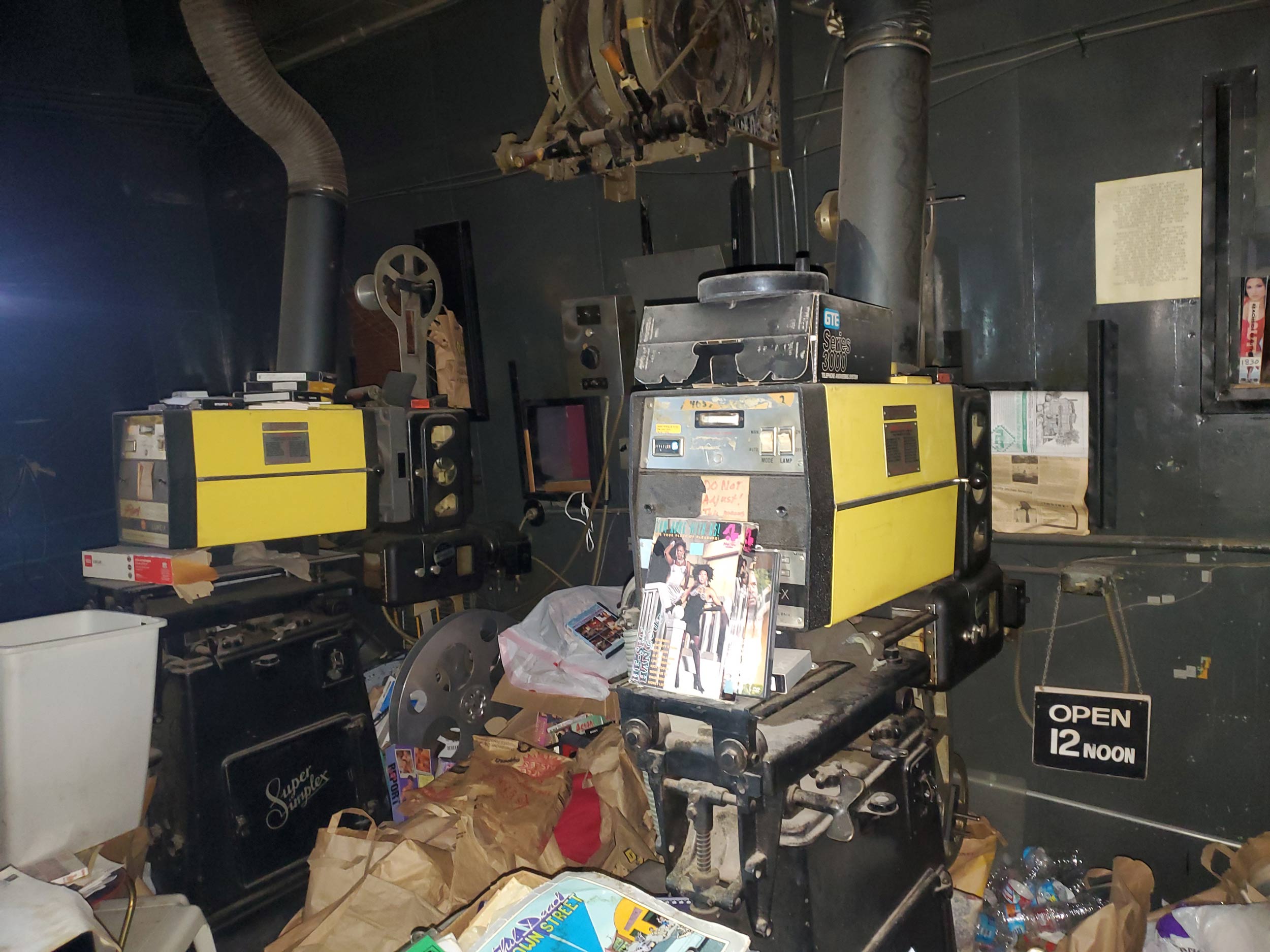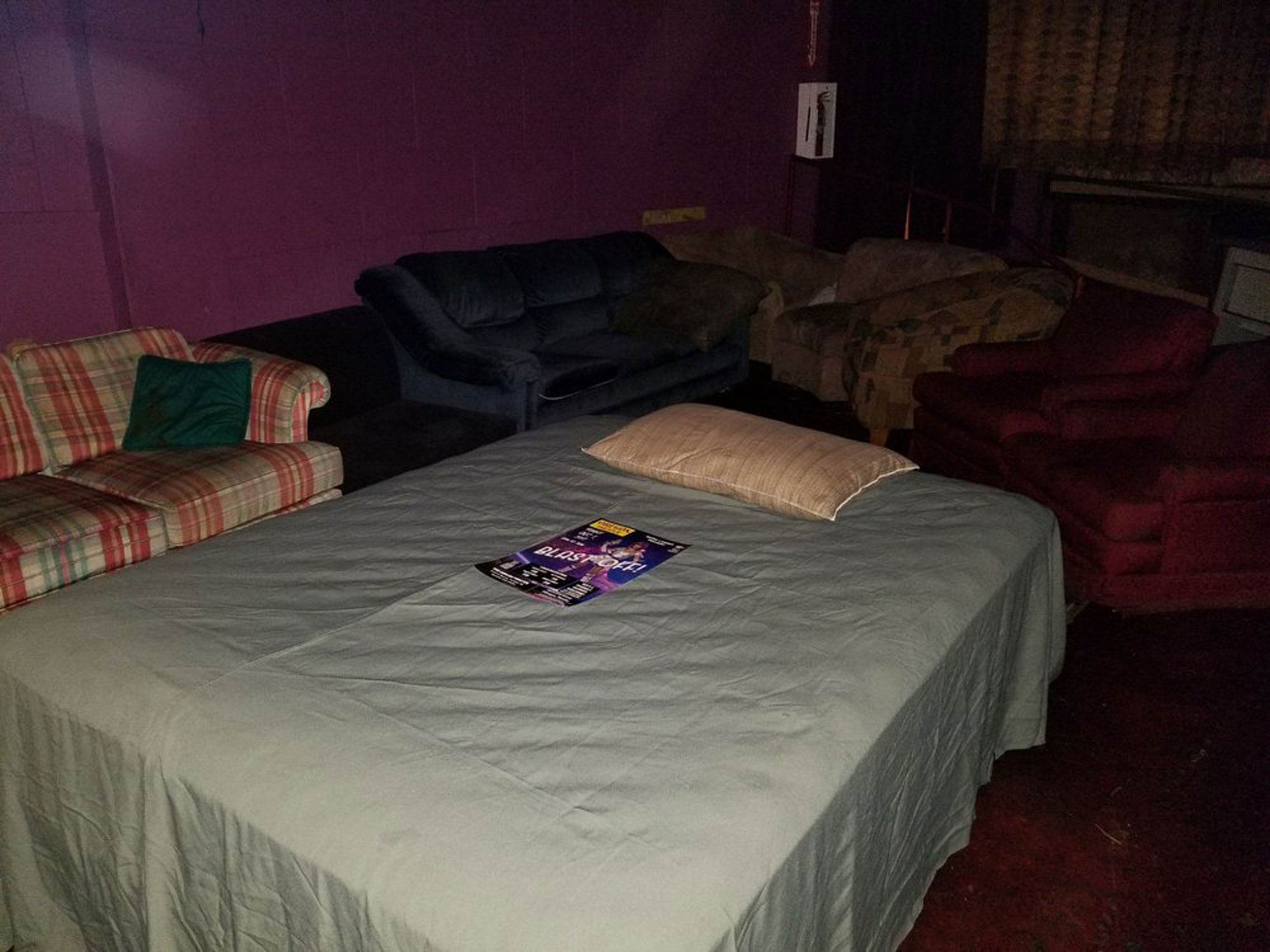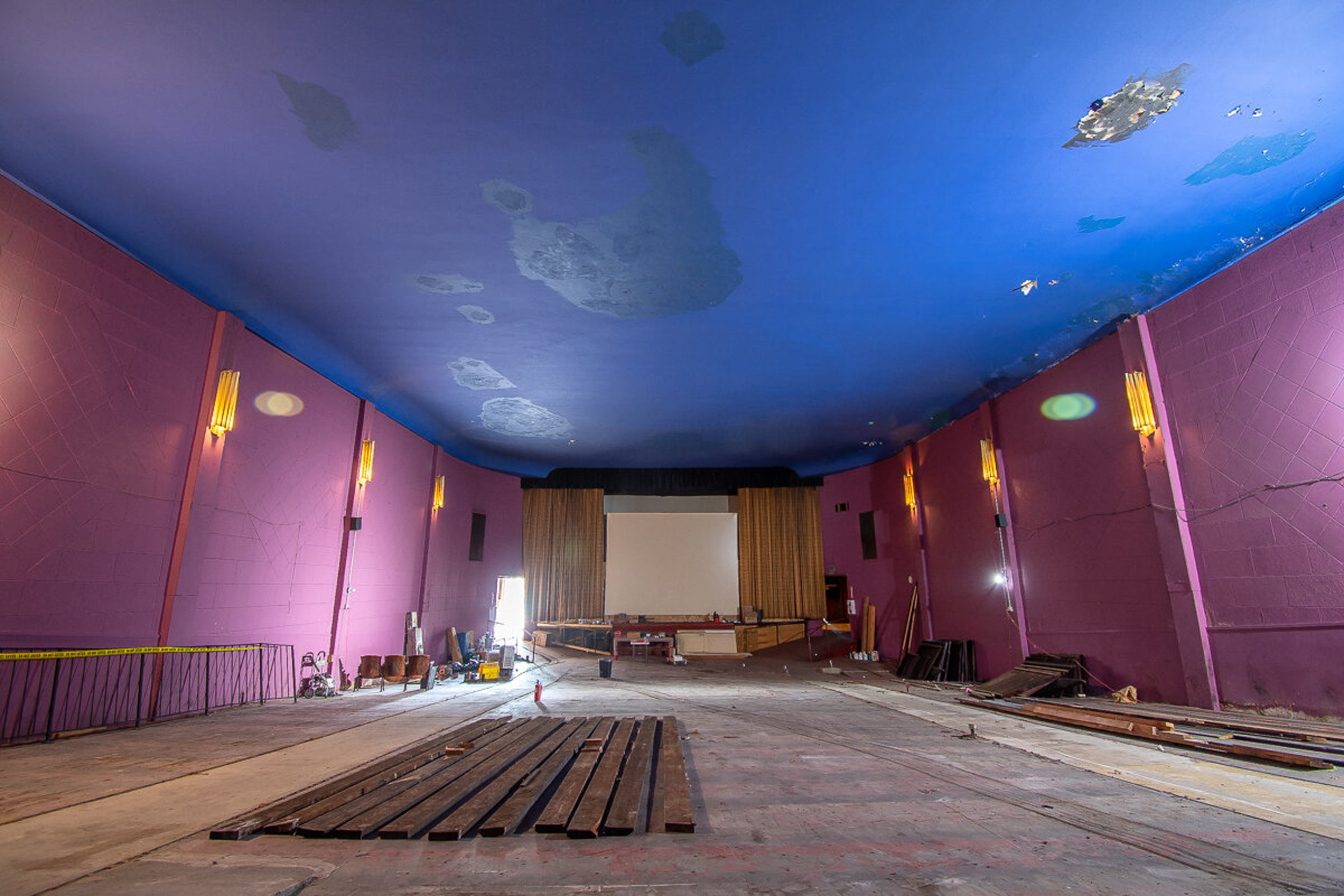The Portland Art Museum’s cinematic counterpart is slated to open this fall, with an eye toward unexpected collaborations between disciplines
In the heart of Southeast Portland, a construction crew, a slew of artists, and a small mass of museum staff members have been exchanging a vast archive of trash for mysterious boxes and structures. (Though, it should be noted, among the trash emerged a few treasures that will be repurposed and retained). These cryptic ins and outs attracted the attention of local passersby, who were only recently made privy to future plans for the nearly 9,000-square-foot space: PAM CUT—the Portland Art Museum’s new cinematic counterpart—won a bidding war for it; the museum picked by its former owner for its theatrical intentions.
The Tomorrow Theater, slated to open in late fall 2023, isn’t purely built to satiate Portland’s thirst for film. (Which is rather immense—its community patronizes more than 40 local movie theaters.) This new establishment is more experiential than its cinema-centric neighbors, and intends to be far more experimental in its programming, driven by an eye for intersectionality across art forms. Its structure is designed to host international cross-media performances, screenings, exhibitions, immersive theater, game nights, and workshops, to name just a few possible examples of its manifold potential. Tomorrow’s purpose, PAM CUT Director Amy Dotson explains, is to facilitate connections between artists and provide platforms for them to experiment within. In doing so, it will encourage disparate audiences to meld, exposing fans of documentary to chamber music, for instance, in featuring a collaborative project between a filmmaker and a classical performance group.
Interior designer Andee Hess of Osmose Design is guiding the theater’s aesthetic persona, finding a sense of artistry part and parcel to her work on the project. “In our work, we’re always collaborating—if I can bring in a sculptor, or a scenic painter, and I know that they’re all here, we’ll make space and time to work with them,” she explains. “I think the pace of the city allows that. It’s just less of a hustle for some of those things, [even though] we have incredibly established artisans. We’re an interior design firm, we’re not necessarily artists—but we’re leaning into that more as we get more comfortable. It’s aspirational for me, that community.” Echoes Dotson, “We don’t want to be place-based. We want to be people-based.”
It is difficult, though, to detach the theater from its physical home. Its spirit is distinctly that of Portland: interested in the offbeat and the unexplored, defined by its enchanting eccentricity. The Tomorrow Theater really lives up to the weirdness of the city’s reputation, but in a way that extends beyond handlebar mustaches and craft cappuccinos and septum piercings; it’s weird in the most distilled sense of the word—weird for its lack of fear in the attempt, and for its spirit of openness.
“We don’t want to be place-based. We want to be people-based.”
While the Tomorrow Theater is undoubtedly forward-looking (it’s literally in the name), its design embraces the space’s history in a series of winks at the building’s past purposes. In its almost 100 years, it’s served as a vaudeville theater, a Spanish-language cinema, and, in its most recent stint, an adult film theater—its long-standing adaptability a testament to the versatility PAM CUT hopes to invoke within it.
Hess is responsible for generating those winks, the biggest of which, she explains, is probably the floating chrome mattress that greets visitors in the entryway. “You see yourself in the reflection, and I don’t think you necessarily read it as a mattress right away, because it’s chrome,” she muses. It’s an in-the-know nod to its former function, in a child-friendly fashion.
In Hess’s hands, the interior is built to both embody and facilitate the theater’s intended purpose. A series of Vivienne Westwood-esque draperies along the walls of the 300-seat performance space, commissioned from some local artists, outwardly appear to be an artistic touch, but also serve the room’s acoustics. Every detail is deeply considered, and inventive in approach. It’s referential to the history of the space and the city, but most defined by its amorphous approach—careful not to impose any hard structures in its physical design, or gesture to programming, instead favoring space for possibility.
“It’s not a blank slate,” says Dotson. “But it is a fresh start.”













